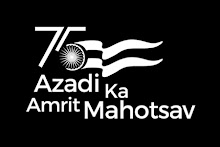Gujarat Chief Minister Narendra Modi laid the foundation for the first phase of the much-awaited Rs 110-crore Bus Rapid Transit System (BRTS) project at Mavdi Chowk in Rajkot.
Under the project, construction of multilane flyovers and innovative bus stations will be undertaken to ease the traffic congestion in Rajkot. The project, which will bring up special corridors encircling the city had been sanctioned under the Jawaharlal Nehru National Urban Renewal Mission (JNNURM). The work on the 29-km long project linking Gondal Road, Jamnagar Road, Greenland Chowkdy and Kuwadva Road will be carried out in three phases.
The first phase involves laying of a 10.7-km five-lane Blue Corridor connecting Gondal and Jamnagar roads. A 1.5-km long flyover from KKV Hall to Raiya Telephone Exchange will be constructed during this phase. It will be followed up by construction of Green Corridor (Jamnagar Road to Morbi Road) and Red Corridor (Morbi-Gondal).
The Blue Corridor will come up on the busiest and accident prone 150-foot Ring Road. The elevated corridor will be 24 metres wide and will have roads connecting the lanes of the corridor. Of the corridor's five lanes, two will be dedicated to BRTS buses while one each for motorised, non-motorised and heavy vehicles. The buses plying on the route will have CNG-run engines, GPS systems and low flooring. There will also be 5.7-metre wide parking lots flanking the corridor, which will also have 30 state-of-the-art bus stops and foot overbridges.
In the second phase, a corridor connecting Gondal Road to Kuwadwa Road and Kuwadwa Road to Greenland Chowkdy will be constructed. According to Rajkot Municipal Corporation, the Central government will bear 50 per cent of the total cost of the project, the state government 20 per cent and the RMC 30 per cent. With a population of 12 lakh, Rajkot is the smallest city to get the project sanctioned. The project has been designed keeping in mind the future population and infrastructural growth of the city. At present, Rajkot annually registers a growth of 9.5 per cent vehicular movement, of which, the two wheelers' growth rate of 9.8 per cent is the highest.
Subscribe to:
Post Comments (Atom)




No comments:
Post a Comment